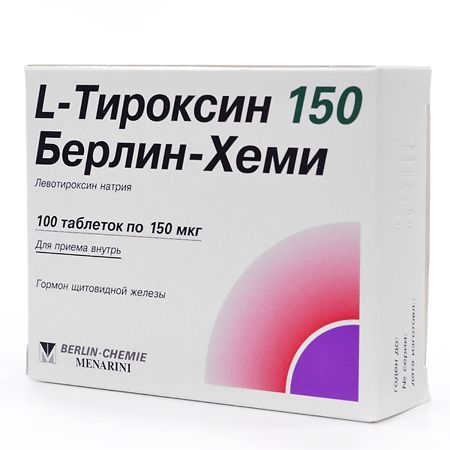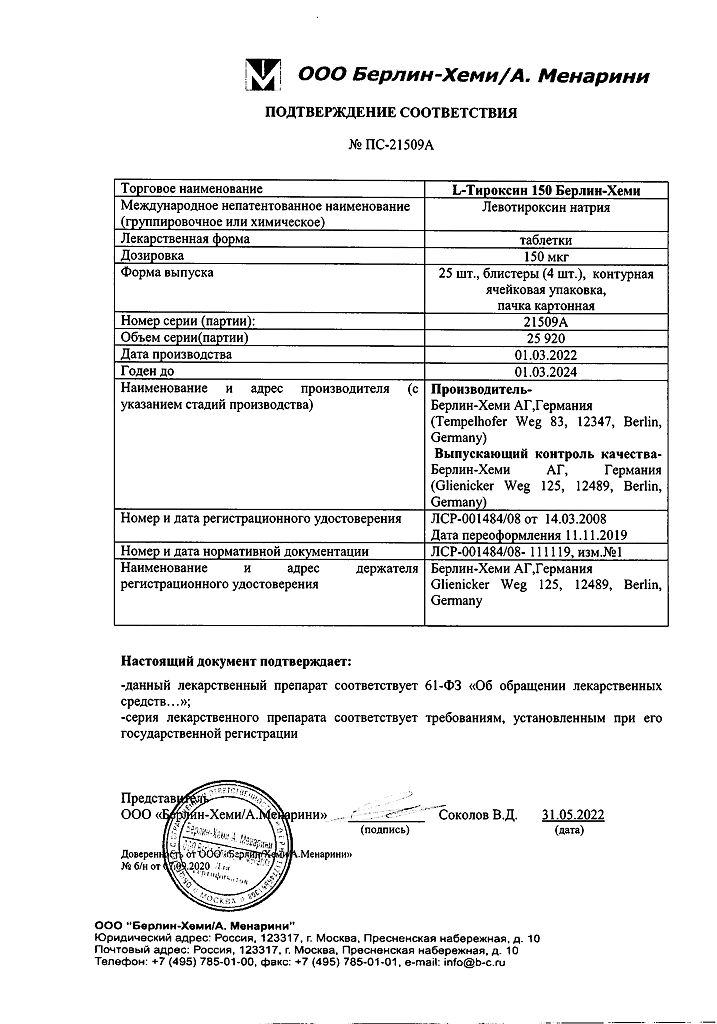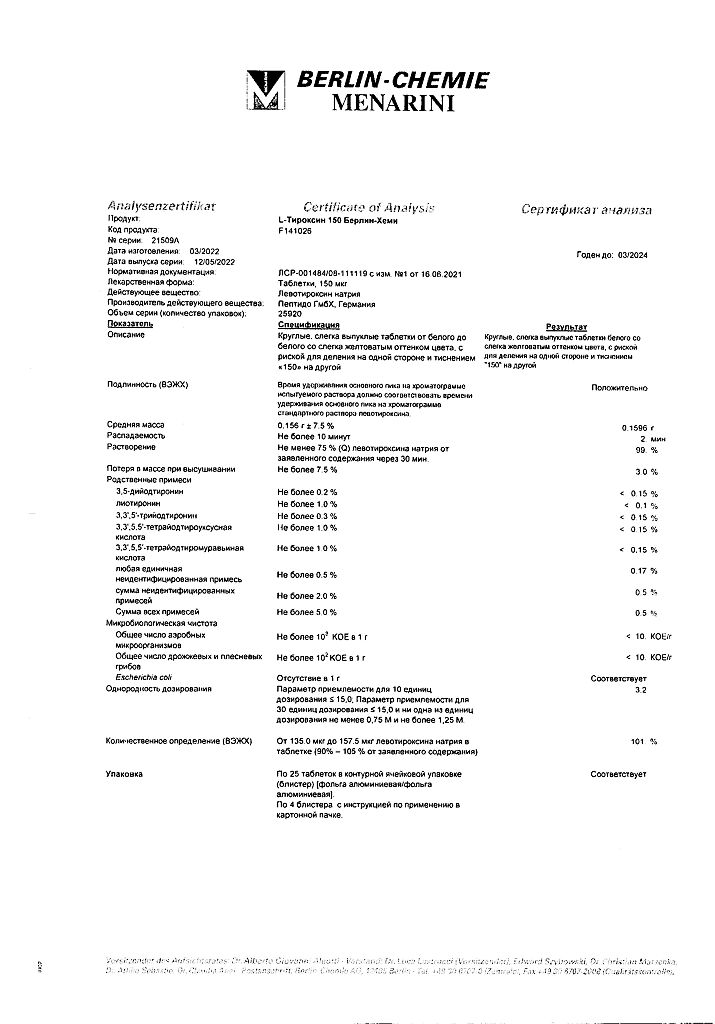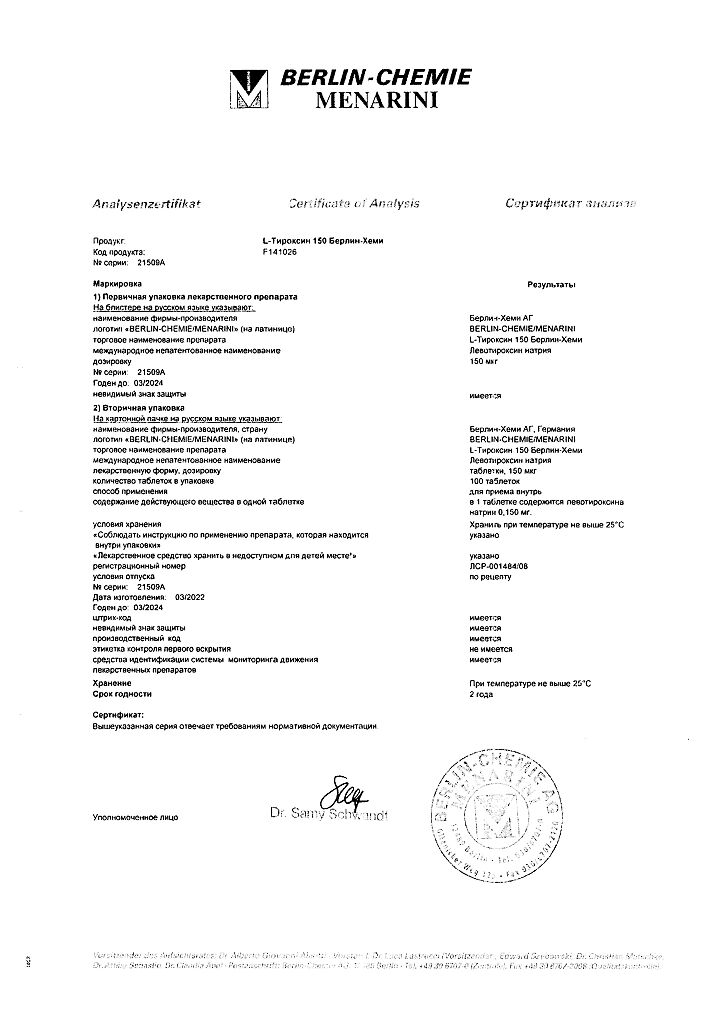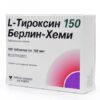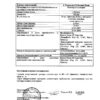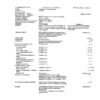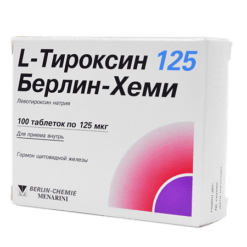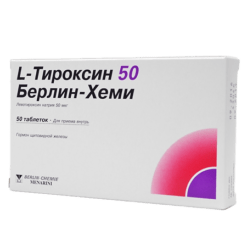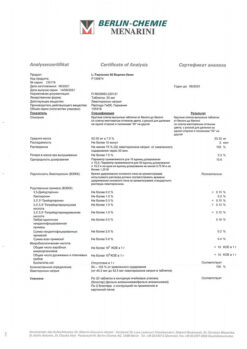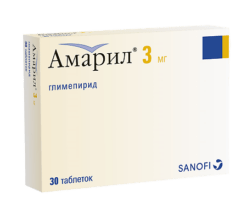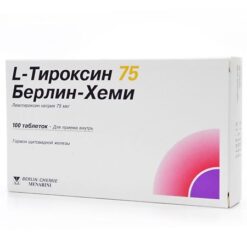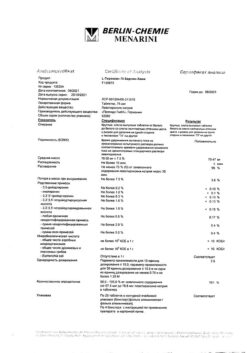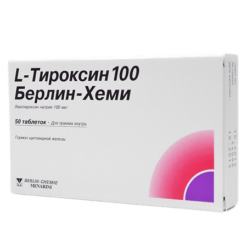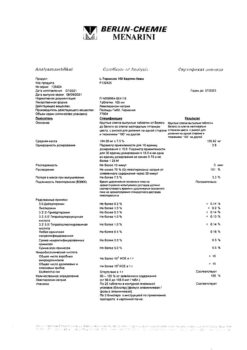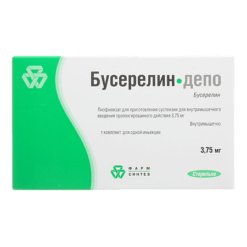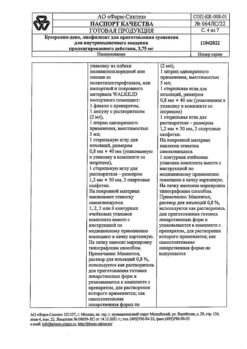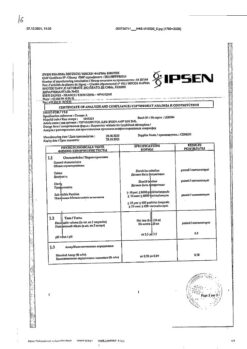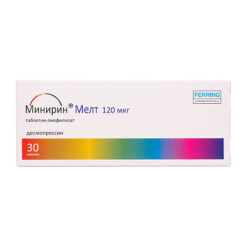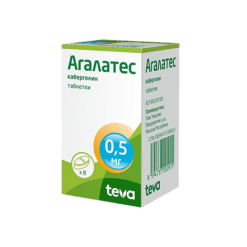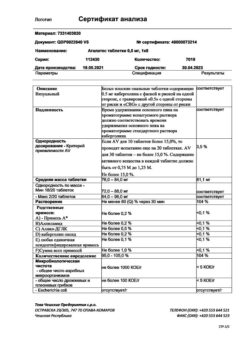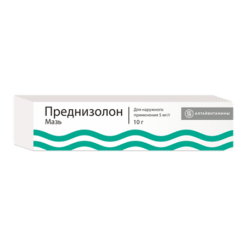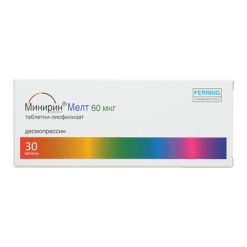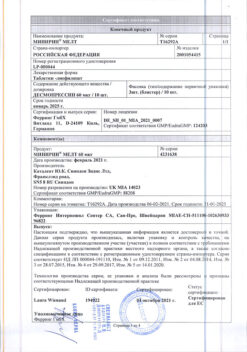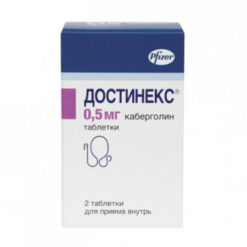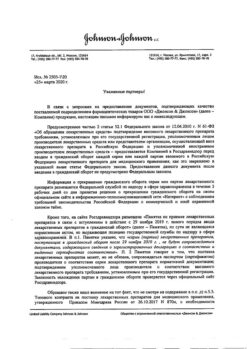No products in the cart.
L-Tyroxine 150 Berlin Chemi, tablets 150 mcg 100 pcs
€5.43 €4.83
Description
Pharmacodynamics
The synthetic left-handed isomer of thyroxine. After partial conversion to triiodothyronine (in the liver and kidneys) and transfer to body cells, it influences tissue development and growth and metabolism.
In low doses it has an anabolic effect on protein and fat metabolism. In medium doses it stimulates growth and development, increases tissue oxygen demand, stimulates metabolism of proteins, fats and carbohydrates, increases functional activity of the cardiovascular system and the CNS. In high doses it inhibits hypothalamic and pituitary TTH production.
Therapeutic effect is observed after 7-12 days, during the same time the action lasts after discontinuation of the drug. The clinical effect in hypothyroidism is seen in 3-5 days. Diffuse goiter decreases or disappears within 3-6 months.
Pharmacokinetics
Intake
After oral administration, levothyroxine is absorbed almost exclusively in the upper small intestine. Up to 80% of the dose taken is absorbed. Food intake reduces absorption of levothyroxine. Cmax in blood serum is reached approximately 5-6 hours after oral administration.
Distribution
After absorption, more than 99% of the drug is bound to serum proteins (thyroxine-binding globulin, thyroxine-binding prealbumin and albumin). In various tissues approximately 80% of levothyroxine is monodeiodized to form triiodothyronine (T3) and inactive products.
Metabolism
The thyroid hormones are metabolized mainly in the liver, kidneys, brain and muscles. A small amount of the drug undergoes deamination and decarboxylation as well as conjugation with sulfuric and glucuronic acids (in the liver).
The metabolites are excreted in the urine and bile. T1/2 is 6-7 days. Pharmacokinetics in special clinical cases In thyrotoxicosis T1/2 is shortened to 3-4 days and in hypothyroidism it is prolonged to 9-10 days.
Indications
Indications
hypothyroid conditions of various etiologies (including those caused by surgical or medicinal effects);
prevention of recurrence of nodular goiter after resection of the thyroid gland;
diffuse euthyroid goiter;
diffuse toxic goiter – after creating a euthyroid state with thyreostatics (in the form of combination or monotherapy);
thyroid cancer after surgical treatment (to suppress tumor recurrence and as replacement therapy);
as a diagnostic tool when performing a thyroid suppression test.
As part of complex therapy: Graves’ disease, autoimmune thyroiditis.
Pharmacological effect
Pharmacological effect
Pharmacodynamics
Synthetic levorotatory isomer of thyroxine. After partial conversion into triiodothyronine (in the liver and kidneys) and passage into the cells of the body, it affects the development and growth of tissues and metabolism.
In small doses it has an anabolic effect on protein and fat metabolism. In medium doses, it stimulates growth and development, increases tissue oxygen demand, stimulates the metabolism of proteins, fats and carbohydrates, and increases the functional activity of the cardiovascular system and central nervous system. In large doses, it inhibits the production of TTRH from the hypothalamus and TSH from the pituitary gland.
The therapeutic effect is observed after 7-12 days, during the same time the effect persists after discontinuation of the drug. The clinical effect for hypothyroidism appears after 3-5. Diffuse goiter decreases or disappears within 3-6 months.
Pharmacokinetics
Suction
After oral administration, levothyroxine is absorbed almost exclusively in the upper small intestine. Up to 80% of the dose taken is absorbed. Eating reduces the absorption of levothyroxine. Cmax in serum is achieved approximately 5-6 hours after oral administration.
Distribution
After absorption, more than 99% of the drug is bound to serum proteins (thyroxine-binding globulin, thyroxine-binding prealbumin and albumin). In various tissues, approximately 80% of levothyroxine is monodeiodinated to form triiodothyronine (T3) and inactive products.
Metabolism
Thyroid hormones are metabolized mainly in the liver, kidneys, brain and muscles. A small amount of the drug undergoes deamination and decarboxylation, as well as conjugation with sulfuric and glucuronic acids (in the liver).
Removal
Metabolites are excreted in urine and bile. T1/2 is 6-7 days. Pharmacokinetics in special clinical cases With thyrotoxicosis, T1/2 is shortened to 3-4 days, and with hypothyroidism it is extended to 9-10 days.
Special instructions
Special instructions
In case of hypothyroidism caused by damage to the pituitary gland, it is necessary to find out whether there is simultaneous insufficiency of the adrenal cortex. In this case, replacement therapy with GCS should be started before treatment of hypothyroidism with thyroid hormones is started in order to avoid the development of acute adrenal insufficiency.
Impact on the ability to drive vehicles and operate machinery
The drug does not affect the ability to drive vehicles or work requiring increased concentration.
Active ingredient
Active ingredient
Levothyroxine sodium
Composition
Composition
1 tab.
levothyroxine sodium 150 mcg
Excipients:
calcium hydrogen phosphate dihydrate,
microcrystalline cellulose,
sodium carboxymethyl starch (type A),
dextrin,
long-chain partial glycerides.
Pregnancy
Pregnancy
During pregnancy and breastfeeding, therapy with levothyroxine sodium prescribed for hypothyroidism should be continued. During pregnancy, an increase in the dose of the drug is required due to an increase in the level of thyroxine-binding globulin. The amount of thyroid hormone secreted in breast milk (even when treated with high doses of the drug) is not enough to cause any problems in the baby during breastfeeding.
Use during pregnancy in combination with thyreostatics is contraindicated, because Taking levothyroxine sodium may require increasing doses of thyreostatics. Since thyreostatics, unlike sodium levothyroxine, can cross the placenta, the fetus may develop hypothyroidism.
FDA category of effect on the fetus is A.
Use in children
In children, the initial daily dose is 12.5-50 mcg. For a long course of treatment, the dose of the drug is determined from an approximate calculation of 100-150 mcg/m2 of body surface area.
For infants and children under 3 years of age, the daily dose of L-Thyroxine Berlin-Chemie is given in one dose 30 minutes before the first feeding. The tablet is dissolved in water to a thin suspension, which is prepared immediately before taking the drug.
Contraindications
Contraindications
hypersensitivity;
untreated thyrotoxicosis;
acute myocarditis;
untreated adrenal insufficiency (must be compensated before starting therapy);
acute myocardial infarction;
high blood pressure.
Side Effects
Side Effects
Allergic reactions (with hypersensitivity to the drug).
When used correctly under medical supervision, no side effects are observed.
Interaction
Interaction
Levothyroxine enhances the effect of indirect anticoagulants, which may require a reduction in their dose.
The use of tricyclic antidepressants with levothyroxine may result in increased antidepressant effects.
Thyroid hormones may increase the need for insulin and oral hypoglycemic agents. More frequent monitoring of blood glucose levels is recommended during periods of initiation of treatment with levothyroxine, as well as when changing the dose of the drug.
Levothyroxine reduces the effect of cardiac glycosides. With simultaneous use of cholestyramine, colestipol and aluminum hydroxide, they reduce the plasma concentration of levothyroxine by inhibiting its absorption in the intestine.
When used simultaneously with anabolic steroids, asparaginase, tamoxifen, pharmacokinetic interaction is possible at the level of protein binding.
When used simultaneously with phenytoin, salicylates, clofibrate, furosemide in high doses, the content of levothyroxine and T4 not bound to blood plasma proteins increases.
Somatotropin, when used simultaneously with levothyroxine, can accelerate the closure of epiphyseal growth plates.
Taking phenobarbital, carbamazepine and rifampicin may increase the clearance of levothyroxine and require an increase in dose.
Estrogens increase the concentration of the thyroglobulin-bound fraction, which may lead to a decrease in the effectiveness of the drug.
Amiodarone, aminoglutethimide, PAS, ethionamide, antithyroid drugs, beta-blockers, carbamazepine, chloral hydrate, diazepam, levodopa, dopamine, metoclopramide, lovastatin, somatostatin affect the synthesis, secretion, distribution and metabolism of the drug.
Overdose
Overdose
Symptoms: characteristic of thyrotoxicosis – palpitations, heart rhythm disturbances, heart pain, anxiety, tremors, sleep disturbance, increased sweating, loss of appetite, weight loss, diarrhea.
Treatment: a reduction in the daily dose of the drug, a break in treatment for several days, and the appointment of beta-blockers may be recommended. After side effects disappear, treatment should be started with caution at a lower dose.
Storage conditions
Storage conditions
The drug should be stored out of the reach of children at a temperature not exceeding 25°C.
Shelf life
Shelf life
2 years.
Manufacturer
Manufacturer
Berlin-Chemie AG, Germany
Additional information
| Shelf life | 2 years. |
|---|---|
| Conditions of storage | The drug should be kept out of reach of children at a temperature not exceeding 25 ° C. |
| Manufacturer | Berlin-Chemie AG, Germany |
| Medication form | pills |
| Brand | Berlin-Chemie AG |
Other forms…
Related products
Buy L-Tyroxine 150 Berlin Chemi, tablets 150 mcg 100 pcs with delivery to USA, UK, Europe and over 120 other countries.

